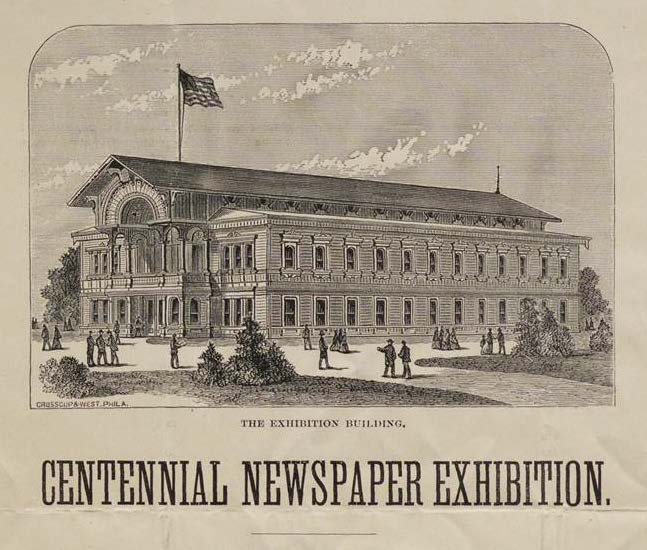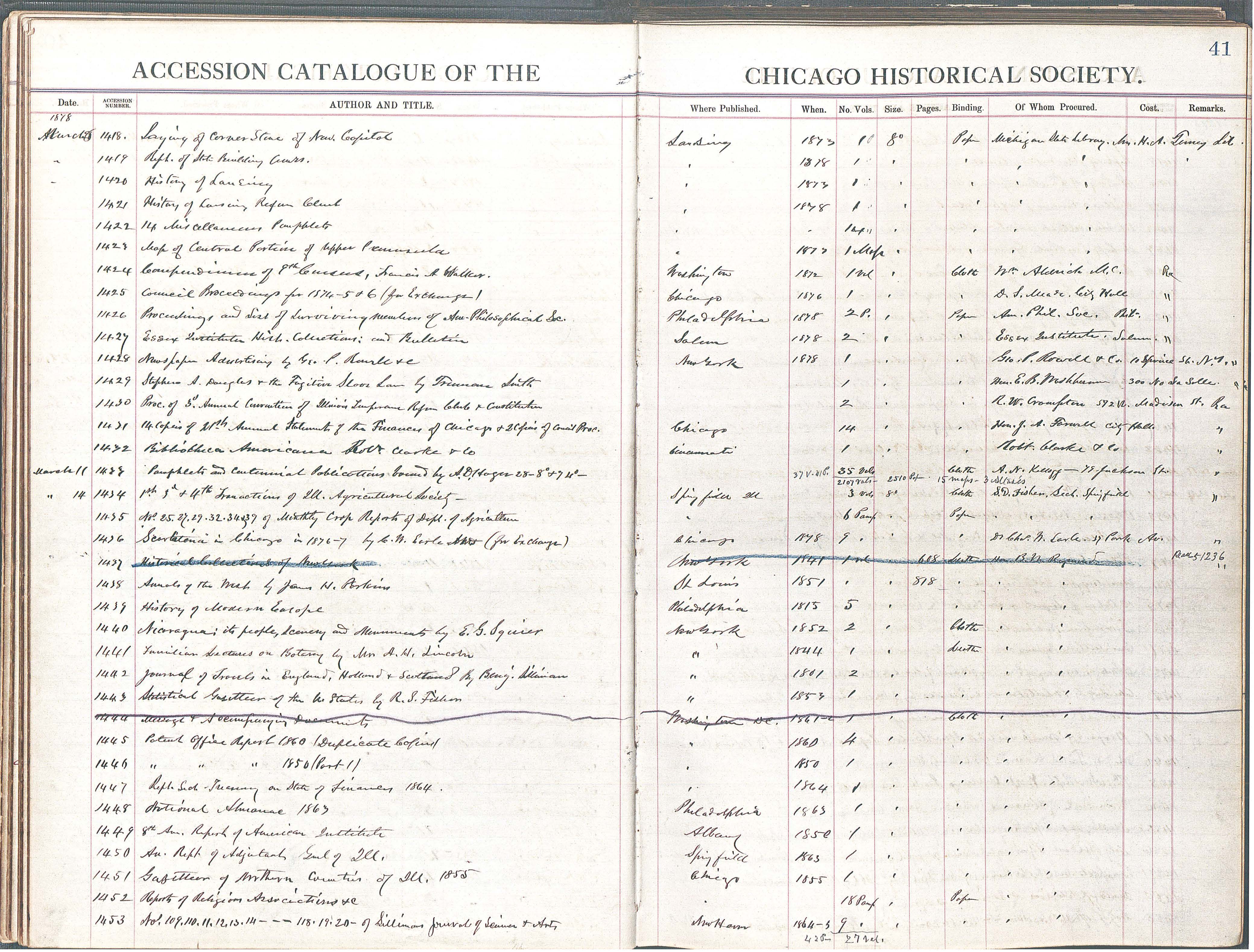Series 13 of Early American Newspapers boasts over 2,300 titles from the trans-Mississippi west. If you browse the series, however, you might notice something peculiar: over a third of these titles are represented by only a single issue, with all these single issues coming from the year 1876. Why does the collection contain so many random issues from the year 1876?
The story begins with a fair: the Centennial International Exhibition held in Philadelphia during the summer of 1876. International expositions, which became immensely popular in the mid-nineteenth century, enabled visitors to compare the industrial progress of participating nations, with “industrial” construed broadly to include all aspects of modern, industrialized civilization: science, technology, agriculture, fine arts, design, and craftsmanship. Each nation, and especially the host nation, would strive to represent itself as the best, and most advanced, in every possible respect.
There had been almost thirty international expositions since the first, in 1851. Like all previous international expositions, the Philadelphia fair was to include exhibits on the printing arts. No previous international exposition, however, had specifically featured newspapers. Because Americans had a reputation for being avid readers of newspapers, the president of the Centennial Commission, Joseph Hawley (himself a journalist), felt that the Centennial International Exhibition ought to highlight this particular aspect of American industry. By multiple reckonings, the United States produced more newspapers than any other nation in the world, and some claimed that more newspapers were published in the United States than in all other nations combined. Given the boosterish nature of the international expositions, the organizers wished to showcase this achievement. The problem was how to present the immensity of the American newspaper industry, and the newspaper’s important place in American life. Hawley’s idea was to exhibit at least one issue of every newspaper currently published in the United States.
From the organizers’ perspective, the principal challenge to realizing Hawley’s idea was logistical: how to identify and collect all these newspapers on such short order. Fortunately, the perfect person for the task was ready at hand: George Rowell, publisher of the annual American Newspaper Directory, the first successful newspaper directory of its kind in the United States. Nobody had more extensive contacts within the nation’s newspaper industry. Regardless of a newspaper’s size or location, Rowell probably knew about it.
Rowell took upon himself the responsibility not only to collect the newspapers, but also to organize the construction of a suitably magnificent pavilion in which to display them:

After the Exposition closed in November, Rowell collated the exhibited newspapers into six complete sets. Each set contained about 8,000 newspapers: one issue of every newspaper published in the United States during the centennial year of 1876. One set went to the Library of Congress, one to the Mercantile Library Company of Philadelphia, and one to a library in Tasmania. Rowell kept one set for himself, and the last set was sold to Chicago millionaire Ansel Nash Kellogg, who purchased it for the Chicago Historical Society (CHS), which was struggling to rebuild after the destruction of its collection during the Great Chicago Fire in 1871, and a second, smaller fire in 1874.

Within a few decades, Rowell’s centennial newspaper sets had become much coveted by collectors of Americana. Clarence Brigham, the famous newspaper bibliographer and librarian for the American Antiquarian Society (AAS), wanted one of these sets for the AAS, which had long prided itself on having the finest newspaper collection in the nation. For years the sets eluded him, until 1915, when he persuaded the CHS to donate all volumes from its set that covered the eastern states. These volumes formed the core of the AAS’s “Rowell Collection.” In the 1970s, the CHS agreed to sell the remainder of Kellogg’s original gift, retaining only the Illinois volumes for its own collection, and in this way the AAS finally acquired a nearly complete set of the Centennial newspapers. It is from this same set that the stray 1876 newspaper issues in Series 13 of Early American Imprints were digitized.
Works Consulted
American Antiquarian Society. The Collections and Programs of the American Antiquarian Society: A 175th-Anniversary Guide. Worcester, Mass.: The Society, 1987.
Andreas, A. T. History of Chicago: From the Earliest Period to the Present Time. Vol. 3. 3 vols. Chicago: A. T. Andreas, 1886.
Centennial Newspaper Exhibition, 1876. New York: G. P. Rowell & Co., 1876.
Findling, John E., and Kimberly D. Pelle, eds. Encyclopedia of World’s Fairs and Expositions. Jefferson, NC: McFarland & Co, 2008.
J.C.A. “The Chicago Historical Society.” Christian Union, April 9, 1879.
“Miscellany.” College & Research Libraries News 38, no. 4 (April 1977): 99–104.
“Newspapers: AAS Adds Rowell Collection.” News-Letter of the American Antiquarian Society, January 1977.
“Report of the Council.” Proceedings of the American Antiquarian Society; Worcester, Mass. 87, no. 2 (January 1, 1978): 227–256.
“The Census and the Periodical Press.” Publishers’ Weekly, May 17, 1890.
With special thanks to Lesley Martin at the Chicago History Museum for help confirming the Kellogg donation, and for providing the image from the Chicago Historical Society Accession Ledger.